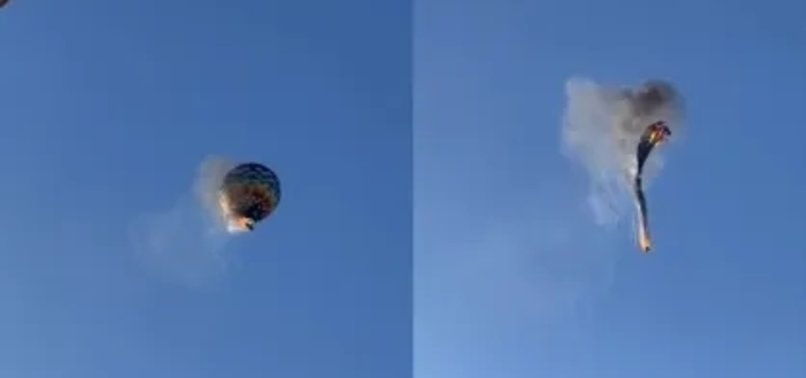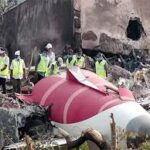PRAIA GRANDE (Santa Catarina), JUNE 21, 2025
A scenic sunrise flight meant to celebrate life turned into a nightmare when a hot air balloon in Praia Grande, a popular Brazilian tourist destination, caught fire mid-air and crashed, killing eight people and leaving 13 others injured.
Eyewitnesses say flames engulfed the basket in seconds, forcing some passengers to leap from a deadly height in a desperate attempt to survive.
What Happened?
At approximately 9:30 a.m. local time, the balloon, operated by Sobrevoar Turismo, had just taken off with 21 people on board—mostly tourists and some crew—when passengers noticed something was wrong.
“There was a sudden burst of flame from beneath the basket,” said one survivor to local media. “The pilot shouted for us to jump. Some people screamed. Others hesitated. Then the balloon rose again… and those who didn’t jump were gone.”
The balloon caught fire shortly after takeoff, reportedly due to a malfunction or misfire from a backup blowtorch being used onboard. The fire quickly spread to the fabric of the envelope and the wooden base, causing structural collapse.
Thirteen people managed to leap from the basket while it hovered low. Eight were unable to escape in time—some died instantly from burns, others succumbed to injuries sustained in the fall.
Who Were the Victims?
Among the victims were well-known professionals and young travelers, including:
- Dr. Leise Herrmann Parizotto, a respected psychologist
- Leane Elizabeth Herrmann, her mother
- Dr. Andrei Gabriel de Melo, an ophthalmologist
- Leandro Luzzi, a figure-skating teacher from São Paulo
- Married couple Janaina and Everaldo da Rocha
- Juliane Jacinta Sawicki and Fabio Luiz Izycki, from Paraná
They were reportedly on holiday together, taking part in what was marketed as a luxury sunrise balloon tour above the canyons of southern Brazil.
Technical Fault or Human Error?
Initial investigations suggest that a portable blowtorch—used by the balloon team to boost flame for rapid elevation—may have malfunctioned or been ignited inappropriately.
“A smaller emergency burner was in use. Something triggered a backdraft or leak, which set the entire rig on fire,” stated a Civil Aviation Authority official.”
The pilot, who survived the crash, is cooperating with authorities. Sobrevoar Turismo, the balloon company, has had its operations suspended indefinitely pending a full federal investigation. The Brazilian aviation authority is expected to publish preliminary findings within 30 days.
The Scene: Praia Grande’s Fragile Skies
Often called the “Cappadocia of Brazil”, Praia Grande in Santa Catarina is a magnet for balloon tourism. June is peak season, coinciding with regional festivals, clear skies, and massive footfall.
Balloon rides are often offered to couples and small groups at sunrise—making them a favorite for proposals, anniversaries, and influencer content. Many operators run multiple flights each morning.
But this incident—and another crash reported in Boituva, São Paulo just days earlier—has raised serious questions about safety standards, regulatory oversight, and pilot training in Brazil’s rapidly growing balloon tourism industry.
What Authorities and Families Are Saying
Santa Catarina Governor Jorginho Mello called the crash “a devastating tragedy” and assured grieving families that psychological and financial support would be made available.
“These people boarded for joy, and returned in silence. Our skies are sacred—we must never let joy cost a life,” the governor said in a public address.
Family members of victims gathered at the local hospital, mourning those lost while praying for the recovery of survivors, some of whom remain in critical condition with burns and fractures.
A Pattern of Negligence?
This is Brazil’s second hot air balloon tragedy within a week. In Boituva, a popular ballooning town in São Paulo, another crash on June 18 resulted in one death and 11 injuries. Both incidents involved fire-related loss of control.
Experts warn of a pattern of negligence, as balloon companies struggle to meet the demands of booming tourism while cutting corners on safety and staff training.
“Too many operators treat ballooning like a carnival ride. It is aviation,” said Gabriel Silva, a retired pilot and flight safety analyst. “No one should take off without proper maintenance checks and fuel management.”
What This Means for Future Balloon Flights
Brazil’s Civil Aviation Authority is now:
- Reviewing certification procedures for balloon operators
- Investigating the storage and use of open flames in gondolas
- Proposing mandatory pre-flight safety briefings and stricter pilot licensing
- Considering a temporary suspension of commercial balloon rides in Santa Catarina and São Paulo
Global Echoes: Not Just a Brazil Problem
Hot air ballooning accidents are rare, but when they happen, they’re often catastrophic:
- Luxor, Egypt (2013): 19 tourists died when a balloon caught fire and exploded mid-air
- Texas, USA (2016): 16 people killed after a balloon struck power lines
- Turkey (2022): Mid-air collision left 3 dead during a sunrise tour
These incidents reinforce the fact that balloon flights require aviation-level discipline, not festival-level regulation.
Final Word
What was meant to be a moment of wonder—a view from the clouds—turned into an unspeakable tragedy.
As Brazil mourns the lives lost in Praia Grande, the world watches and asks: Are these “dream rides” worth the risk without proper safety?
Until strict global protocols and real accountability are enforced, the skies will remain as fragile as the dreams they promise to lift.
References
- AP News: Brazil Balloon Fire Kills 8
- People Magazine: Hot Air Balloon Crash
- The Sun: Victims of Brazil Balloon Crash
- CNN Brasil
- Brazilian Civil Aviation Authority (ANAC)












